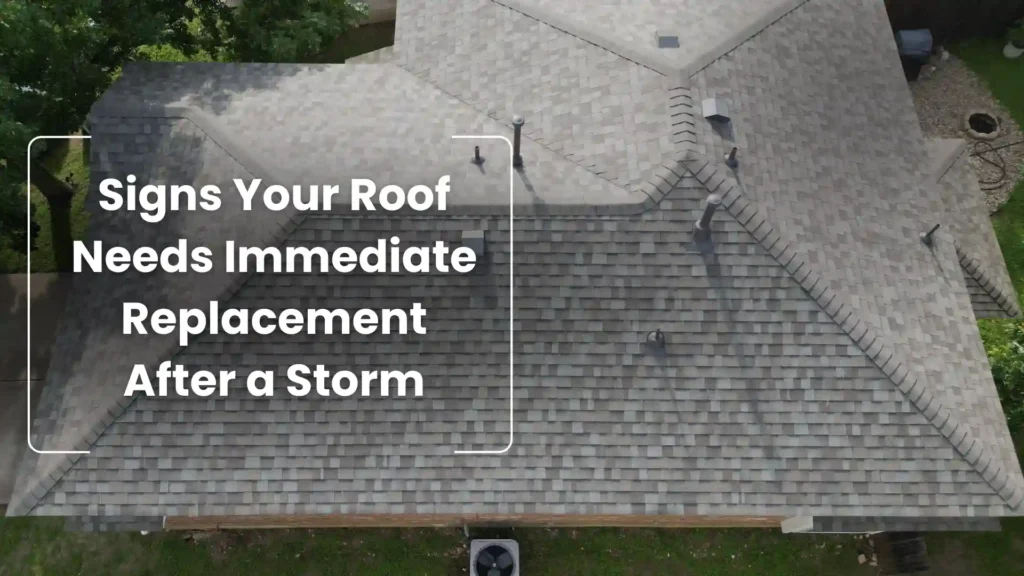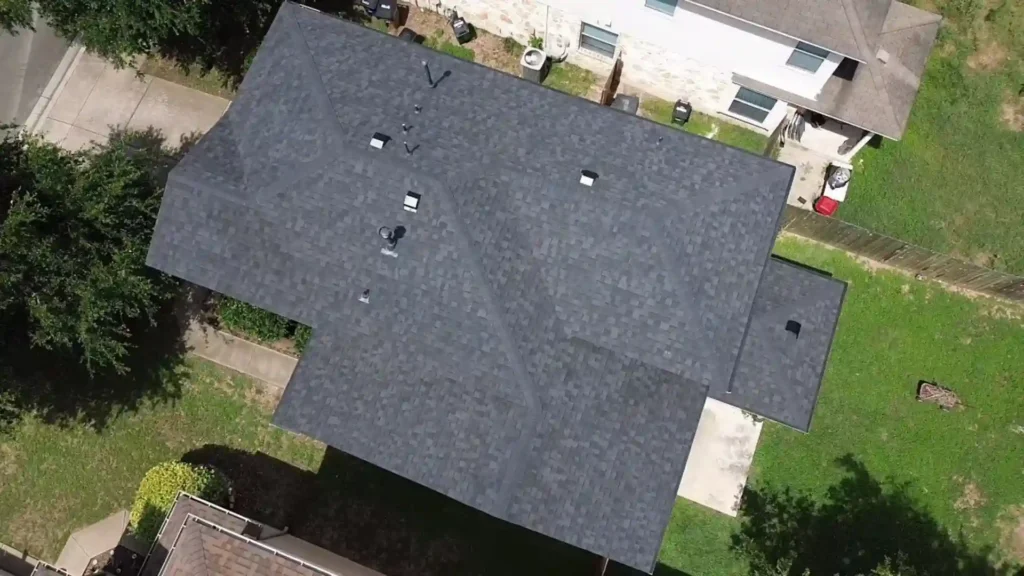Posted on Tuesday, April 1st, 2025 at 9:00 am
 Texas is known for its extreme hailstorms, tornadoes, and hurricanes, and each storm brings the threat of destruction to your home. One of the most common places to see property damage after a storm is the roof of your house. If you’ve recently been through a severe storm, you should know the signs that you need to replace your roof to prevent further damage to your home.
Texas is known for its extreme hailstorms, tornadoes, and hurricanes, and each storm brings the threat of destruction to your home. One of the most common places to see property damage after a storm is the roof of your house. If you’ve recently been through a severe storm, you should know the signs that you need to replace your roof to prevent further damage to your home.
Common Signs You Need a Roof Replacement After a Storm
You might be worrying about a storm-damaged roof after the most recent hailstorm or tornado. If you think you might need a replacement, here are the signs to look for:
- Missing or Damaged Shingles: One of the most obvious signs you should replace your roof is missing or damaged shingles. Often, you can see this from the ground. Look for any shingles that are loose, curling, or are gone entirely. A closer inspection could reveal cracked or buckled shingles.
- Granule Loss: Granules protect shingles from ultraviolet rays. Once the shingles begin to lose their granules, they lose their effectiveness. You can find granules in your gutters or around your home’s perimeter.
- Leaks and Water Stains: Water damage can devastate a home, and it’s a sign that your roof might need to be replaced or repaired. Evidence of water damage will be present on your ceilings or walls. Look for water stains and discoloration on and around your ceilings.
- Damaged Flashing: Chimneys, vents, and skylights all have a layer of protection called flashing. This prevents water infiltration. However, leaks can happen very quickly if the flashing is bent, cracked, or missing altogether. It’s necessary to remedy this issue immediately.
- Sagging Roof Deck: Another sign visible from the ground is a sagging roof deck. When the roof deck sags, it indicates structural issues, usually caused by a pooling of water or prolonged water damage.
- Hail Damage on Shingles: Hail is one of the nastiest weather types we see in Texas. A hailstorm can cause dents to your shingles, and even the slightest dent can lead to significant water damage. It’s a good idea to inspect your roof after every hailstorm to remedy any affected shingles.
- Mold or Moss Growth: Mold and moss grow in the presence of trapped moisture, so if you see an excessive build-up of either of these substances, it’s a good indication that your roof is suffering from long-term water damage.
A healthy roof is critical to a safe home and can save you a lot of money in the long run. If you see any signs listed here, it might be time to replace your roof.
How to Inspect Your Roof for Storm Damage
Knowing the signs of roof deterioration is half the battle. You should also learn how to inspect your roof safely. Climbing on top of a roof is extremely dangerous and not something that’s recommended for everyone to do. Instead, start your inspection process by grabbing a pair of binoculars. You can inspect from the ground reasonably well.
To conduct an exterior inspection, examine your shingles from all angles of the house. You are looking for missing or damaged shingles. Next, look in your gutters and downspouts for any granules. Then, take a look at your flashings. Make sure they are all intact and not damaged.
After your exterior inspection, you’ll want to conduct an interior inspection. First, look in your attic. Search for signs of water intrusion, such as stains, mold, or dampness. Then, look at your ceilings and walls. Look for signs of water intrusion, which can include water stains or peeling paint.
Lastly, if you see any damage or are unsure you have looked closely enough, call a professional for a more detailed inspection. This should be done after any severe storm, regardless of whether or not you feel comfortable doing your own inspection, since a professional will be able to get on your roof and examine every shingle closely.
Steps to Take If You Need a Roof Replacement
If your inspection uncovered storm roof replacement signs, you can take several steps to protect your home from further damage.
- Document the Damage: The first step you should take is to photograph all the damage you see. Make sure you photograph all affected interior and exterior areas to support your insurance claim.
- Contact Your Insurance Company: Next, call your homeowner’s insurance company. Report the damage as soon as you locate and photograph it, and provide any necessary information your insurance company asks for.
- Find a Roofing Contractor: Once you’ve started your claim with your insurance company, research a reputable roofing company. You want to look for a contractor with positive reviews and proper licensing. You can also shop around for quotes. Get a couple of different estimates to compare services and pricing. Make sure you select a contractor that is familiar with Texas weather patterns and building codes.
Schedule a repair with your contractors and follow their advice throughout the process.
Preventative Measures for Future Storms
 After replacing your roof, enjoy the beauty of your fresh new shingles. Then, keep the following in mind for future storms:
After replacing your roof, enjoy the beauty of your fresh new shingles. Then, keep the following in mind for future storms:
- Regular maintenance is key. Annual inspections will help identify and address minor issues before they become significant problems.
- Trim the trees near your roof to prevent any branches from causing damage during a storm.
- Consider storm-resistant features such as storm shutters or reinforced roofing materials.
- Clean your gutters regularly to ensure proper water drainage.
Proper upkeep is the best way to extend the life of your roof. Of course, you want to be sure that you are replacing your roof with quality materials for the longest possible life. Speaking with an experienced roof contractor will help you determine the best materials to protect your home.
Does the Damage to Your Roof Warrant an Immediate Replacement?
At RoofsOnly.com, our experienced team is here to inspect your roof and help you find a beautiful, long-lasting solution for your family home. We’ll expertly install your replacement so that it’s fit to stand the rough Texas weather. Contact us online or call us today to schedule your consultation.

